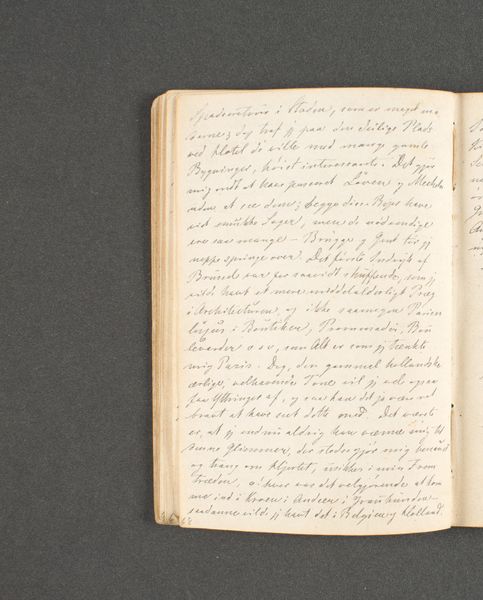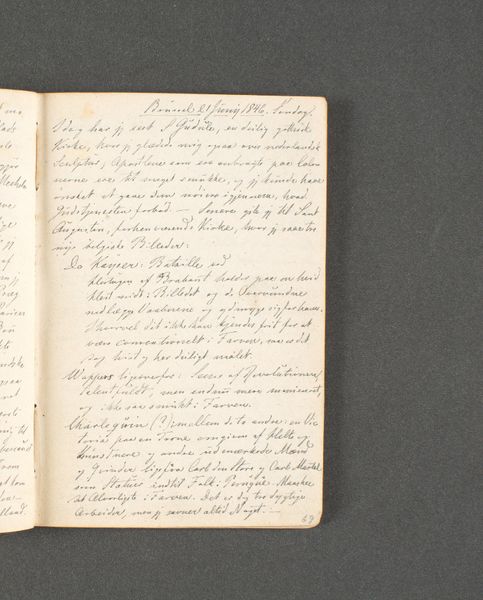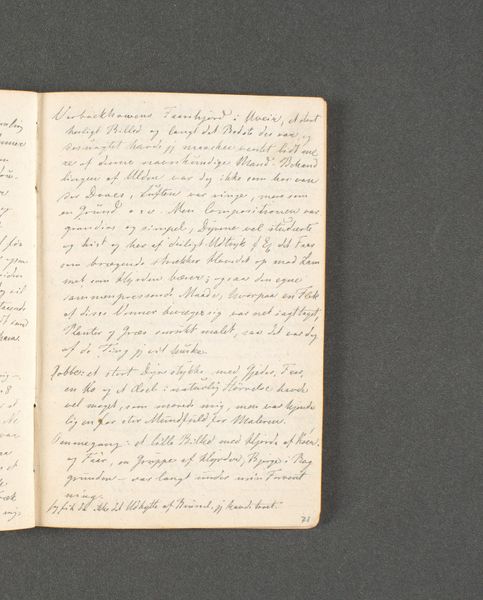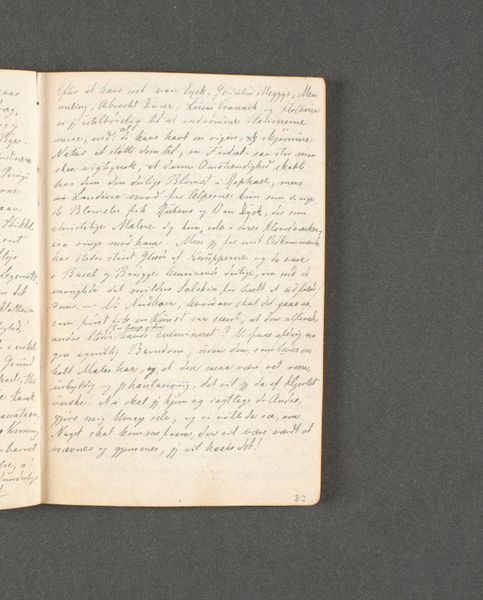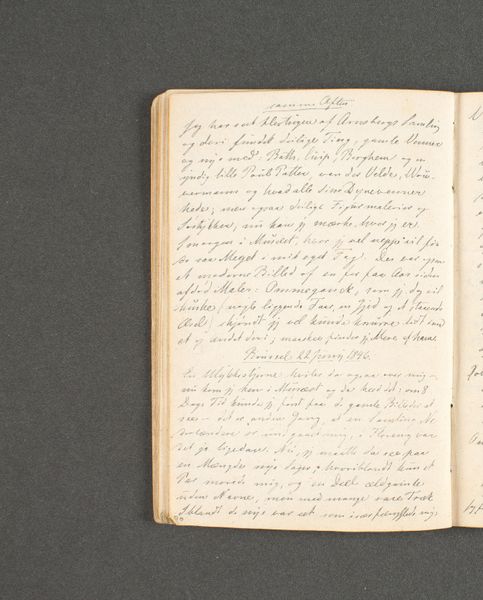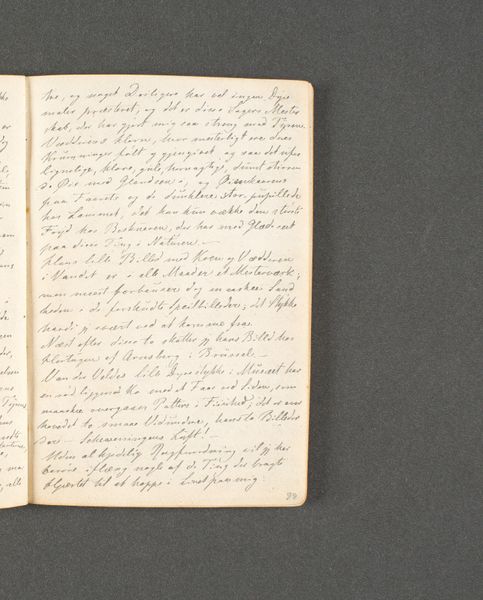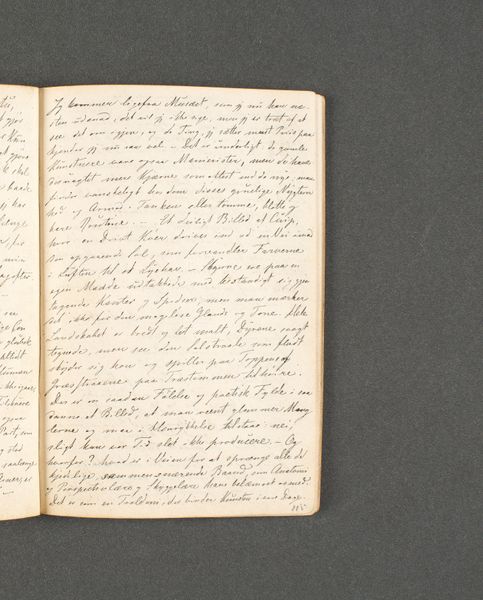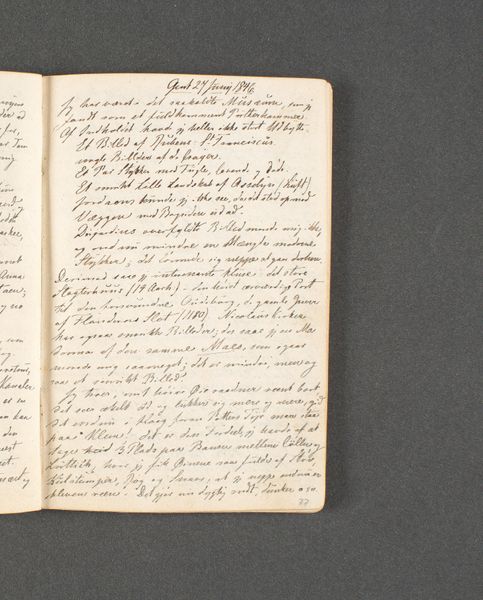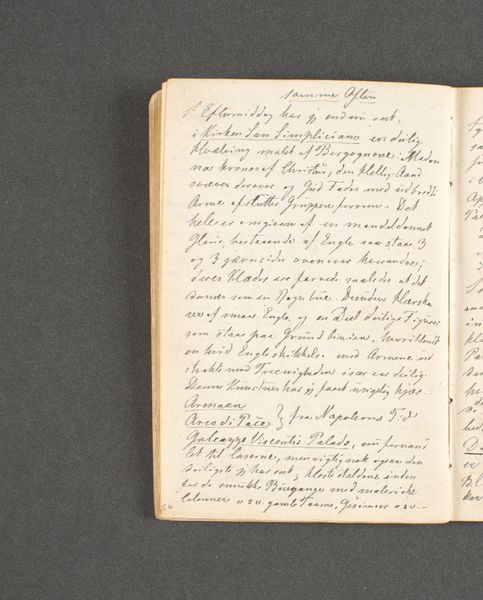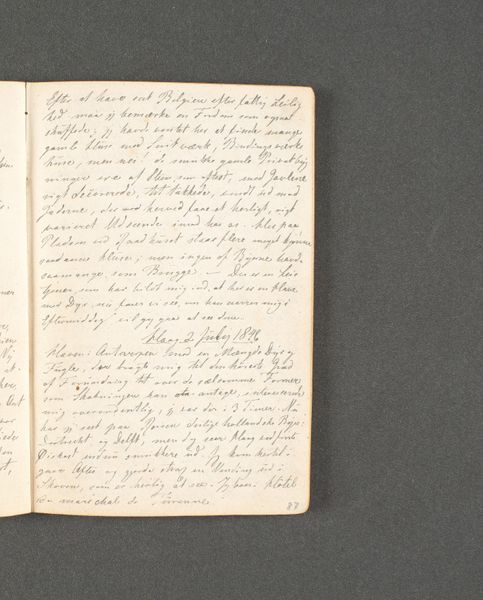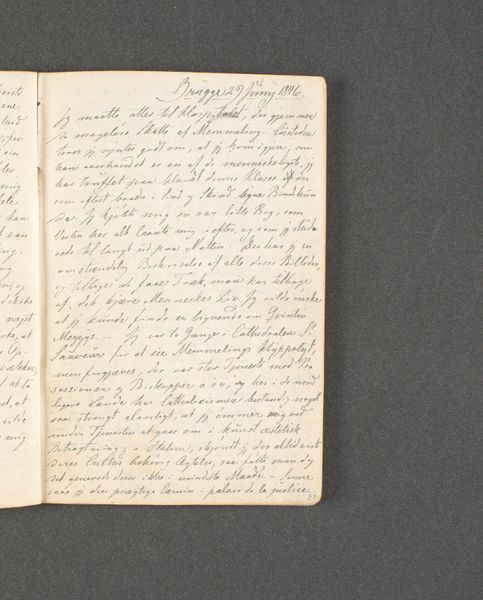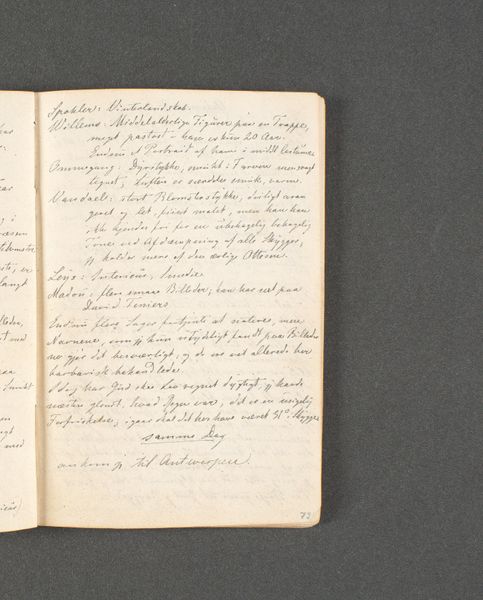
drawing, paper, pen
#
drawing
#
paper
#
pen
Dimensions: 131 mm (height) x 89 mm (width) (bladmaal)
Editor: Here we have a page from a sketchbook, titled "Rejsedagbog. Gent," created in 1846 by Johan Thomas Lundbye. It appears to be a pen drawing on paper, currently housed at the SMK in Copenhagen. My first impression is a sense of intimacy. The writing itself becomes a visual texture. What elements of visual composition do you notice, considering its formal qualities? Curator: Certainly. Immediately, the script dominates. Note how the density of the writing varies across the page, creating tonal shifts. The script, elegant yet hurried, operates both as text and as abstract line. The structure is defined not by representational forms, but by the controlled distribution of ink across the rectangular plane of the paper. Consider the texture; do you notice a tension between the uniformity of the written lines and the irregular edges of the page? Editor: Yes, now that you point it out, I see the variance more clearly. It’s not simply writing, but an arrangement of lines that hold a particular form on the page. Would you say the choice of materials also affects our perception of the artwork? Curator: Undoubtedly. The simplicity of pen on paper directs our focus toward the gesture of writing itself, its formal properties; the line's thickness and directionality become essential. How the ink interacts with the paper fibers, creating subtle bleeds and variations, adds depth without coloristic interference. What feelings do you sense evoked by the use of line alone? Editor: I notice the visual qualities inherent in the drawing form are enhanced with these qualities, lending to its inherent aesthetic quality. Curator: Precisely, emphasizing the beauty of form and the visual impact inherent in artistic choices underscores the essence of this diary entry. The aesthetic quality gives this snapshot of Ghent inherent grace.
Comments
No comments
Be the first to comment and join the conversation on the ultimate creative platform.
